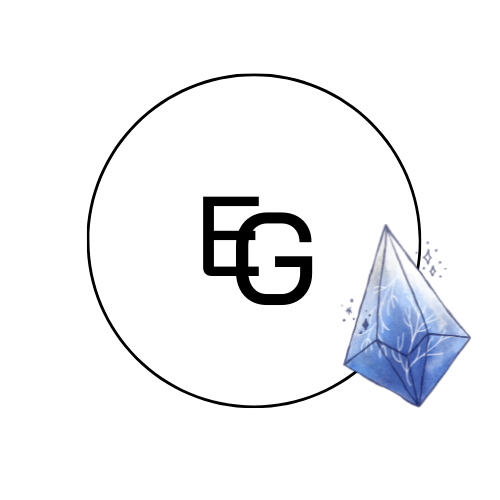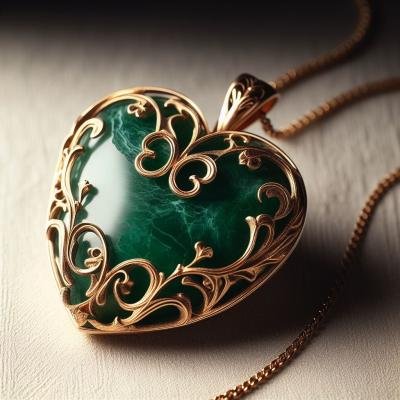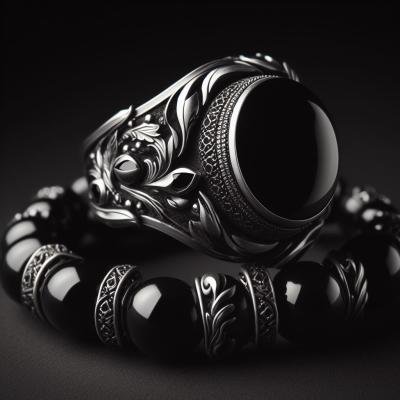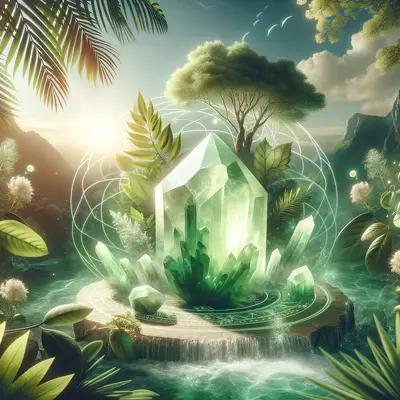Shades of Serenity: A Journey Through the Aquamarine and Teal Gemstone Comparison
Exploring the captivating world of colored gemstones, we delve into the subtle differences and unique characteristics of two popular shades: the serene aquamarine and the deep, mysterious teal. Both hues hold significant meaning in gemology, offering distinct benefits and healing properties. Their rich color palettes not only add aesthetic value but also embody various spiritual and emotional aspects, making them highly sought after in the realm of gemstones.
I. Introduction to Gemstone Colors
A. Significance of Color in Gemstones
The allure of gemstones is not solely their rarity or durability but the profound impact their colors have on the human psyche. Colors in gemstones are more than just visual delight; they carry meanings and energies that have been recognized and revered across various cultures and periods. From the deep reds symbolizing passion to the tranquil blues representing calm, each hue possesses a language of its own, whispering secrets of the earth and tales of antiquity.
B. Aquamarine and Teal in Gemology
In the palette of gemstone colors, aquamarine and teal emerge as two of the most captivating shades. Aquamarine, with its clear sky-blue tones, evokes a sense of purity and relaxation, while teal, a more complex blend of blue and green, carries the depth of the ocean and the balance of nature. These colors not only define the beauty of the gems but also contribute to their identity and perceived value in gemology.
II. The Allure of Aquamarine
A. Historical Significance of Aquamarine
Aquamarine has been a gemstone of fascination throughout history, with legends tracing back to the treasure chests of mermaids and being revered as a symbol of eternal youth and happiness. Ancient seafarers believed aquamarine would calm waves and keep sailors safe, while medieval healers prescribed it to reduce the effect of poisons and aid digestion.
B. Healing Properties and Benefits
Modern crystal therapy attributes aquamarine to soothing stress, enhancing clear communication, and promoting spiritual awareness. It is said to resonate with the throat chakra, facilitating better expression and clear thinking. Its calming energies are believed to reduce the feeling of being overwhelmed and to support those burdened by responsibility.
C. Aquamarine in Modern Jewelry
Today, aquamarine’s appeal extends beyond its historical lore into the realms of fashion and sophistication. It is a favored gem for engagement rings, representing fidelity and love. It is often chosen for its durability and the way its tranquil color complements a range of metals and designs.
III. The Mystique of Teal Gemstones
A. Cultural and Historical Perspectives
Teal gemstones, with their enigmatic blend of green and blue, have been adorned as symbols of wealth and stature. The color teal itself has a royal legacy, often associated with the robes of aristocracy and the peacock— a bird celebrated in many cultures for its beauty and charisma.
B. Teal Gemstones and Their Healing Benefits
In healing circles, teal stones are believed to bridge the gap between the heart and the spoken word, merging the logic of the green with the calm of the blue. They are often used in practices aimed at opening communication, fostering emotional healing, and encouraging a sense of serenity and protection.
C. Teal in Contemporary Settings
In modern design, teal gemstones stand out for their versatility and depth. They can be seen in statement pieces where their bold color catches the eye or as subtle accents in more understated jewelry, where they add a touch of mystery and sophistication.
IV. Aquamarine vs Teal: A Comparison
A. Color Characteristics and Variations
While both aquamarine and teal boast a blue base, aquamarine leans towards a lighter, more transparent blue reminiscent of tropical waters. Teal, however, veers towards a darker spectrum, often with a greenish undertone that gives it a richer, more velvet-like appearance. This variation in color affects not only the gemstone’s aesthetics but also its use in jewelry and art.
B. Gemstone Sources and Geology
Aquamarines are primarily mined in Brazil, Madagascar, and parts of Africa, formed in pegmatites and other rock formations. Teal-colored stones, depending on their exact identity, can be found in a variety of geological settings. For instance, teal sapphires can be sourced from locations like Montana in the United States, while others may come from more exotic locales.
C. Pricing and Availability in the Market
The value of both aquamarine and teal gemstones is often determined by their clarity, cut, and color saturation. Aquamarines with a clear, vibrant blue are typically more valued, while teal stones’ worth can increase with the depth and uniqueness of their color. Market availability for both can fluctuate, with certain shades of teal being rarer and thus more expensive.
V. Spiritual Meanings and Uses
A. Aquamarine in Spiritual Practices
In spiritual realms, aquamarine is often associated with the cleansing of the emotional body and the aura, believed to bring peace and clarity to its wearer. It is a stone of courage, aiding in the release of anxiety and the alignment with one’s higher self.
B. Teal Gemstones and Emotional Healing
Teal stones are thought to be powerful allies in emotional healing, offering balance and rejuvenation. They are used to aid in meditation, helping to clear the mind and ease the transition into a peaceful state of being. Teal is also associated with the concept of life-giving waters and renewal, often used in practices that aim to revitalize the spirit and restore harmony.
VI. FAQs
Q: Is aquamarine the same as teal?
A: No, aquamarine and teal are distinct hues; aquamarine is a lighter, more transparent blue, while teal is a deeper color that blends blue and green.
Q: Is Aqua Blue and teal the same?
A: Aqua blue is generally a lighter and more cyan-leaning blue compared to teal, which is a darker shade that incorporates more green.
Q: What color is similar to aquamarine?
A: Sky blue and turquoise are similar to aquamarine, sharing their light blue aspect but with varying degrees of green and brightness.
Q: What color is similar to teal?
A: A deep forest green or a dark cyan can resemble teal, offering the same sophisticated blend of blue and green with a rich depth.
Q: How does the value of aquamarine and teal gemstones compare?
A: The value can vary widely based on factors like clarity, origin, and color intensity, with pure and intense colors typically commanding higher prices.
Q: Can aquamarine and teal stones be used interchangeably in jewelry?
A: While they can both be used in jewelry, their different color tones may suit different designs and personal color preferences.
Q: What are the best settings for aquamarine and teal gemstones?
A: Aquamarine is often set in light and airy designs to emphasize its clarity, while teal stones are suited to bolder, more substantial settings that highlight their depth.
VII. Conclusion
A. Choosing Between Aquamarine and Teal
When selecting between aquamarine and teal, consider not only the aesthetic qualities but also the symbolism and emotional resonance each color carries. Aquamarine brings a sense of peace and clarity, making it an excellent choice for those seeking tranquility. Teal, with its richer depth, might appeal to those drawn to its balance and protective qualities.
B. The Impact of Color on Gemstone Selection
The choice of color in a gemstone is as personal as it is profound. Beyond beauty, the color of a gemstone can influence mood, reflect personality, and connect with the wearer on a spiritual level. Whether drawn to the serene wash of aquamarine or the enigmatic allure of teal, the selected hue can become a meaningful expression of one’s inner self.
VIII. Suggested Readings
Before delving into your next gemstone purchase or deepening your knowledge of these fascinating colors, consider exploring the following recommended readings. These books offer insights into the world of gemstones, their properties, histories, and the impact they have had on various cultures throughout the ages.
- “Gemstones of the World” by Walter Schumann – A comprehensive guide covering identification, properties, and lore of gemstones, including nuances between colors like aquamarine and teal.
- “Color and Gemstones: A Journey Through the Spectrum” by R. Graham – This book explores the significance of color in gemology and how it affects the value and perception of gemstones.
- “The Crystal Bible” by Judy Hall – A spiritual guide to the properties of crystals, Hall’s work delves into the healing aspects of stones like aquamarine and teal.
- “Jewelry and Gemstone Buying Guide” by Renee Newman – A practical resource for anyone looking to purchase gemstone jewelry, with advice on choosing between different colors and types.
- “Healing Crystals and Gemstones: From Amethyst to Zircon” by Dr. Flora Peschek-Böhmer and Gisela Schreiber – Offers detailed information on the healing properties associated with various gemstones, including aquamarine and teal.
After enriching your understanding with these texts, you’ll be better equipped to appreciate the subtleties between aquamarine and teal, making more informed choices that align with both your aesthetic preferences and healing needs.







